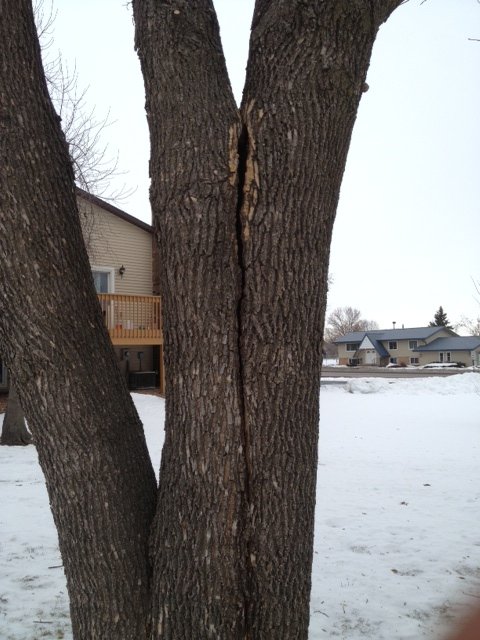Emerald Ash Borer; Is It Worth Saving Your Ash Tree?
After its discovery in 2002 in Michigan, Emerald ash borer (EAB) has killed millions of ash trees in a short time period. The Emerald ash borer is an exotic insect pest (non-native), so ash trees have no natural protection methods to fight off the insect. Unfortunately, EAB was found in Minnesota in 2009 and has already started to change our landscape. Most effective EAB management plans will involve a combination of efforts including removal of ash trees, replacement of some ash trees, as well as treatment options to save valuable ash trees.
The damage and symptoms of an attack from Emerald ash borer can go unnoticed for 2-4 years before a tree dies. Since prevention is the most effective management practice, a plan should be in place as soon as possible. Any ash tree within 15 miles of a confirmed Emerald ash borer site is potentially at risk.
6 Key EAB Management Facts
Regardless of your management plan, EAB is going to be costly for everyone.
Untreated ash trees have virtually ZERO chance of survival
In general, smaller-sized ash trees should be replaced, instead of treated.
Not all ash trees should be saved.
Chemical treatments can be very effective against EAB.
Treatments are more effective when done preventively.
The BIG Oak says that any ash tree that does NOT meet all four of these criteria, should not be chemically treated against EAB. Here are the four necessary criteria:
#1 Ash tree is a substantial SIZE
Ash trees under 10 inches should not be treated. They are small enough that replacement is a far greater value than chemical treatment year after year.
#2 Ash tree has GOOD STRUCTURE
Ash trees that have poor structure or major overall flaws should be considered for removal instead of chemical treatment. Any ash tree that is likely to fail at some point in the near future, should not be treated. Any budget should be kept for removal and / or replacement costs.
Note from The BIG Oak = Obviously there can be a large variance in what is considered “likely to fail”. The 3 pictures below represent varying degrees of failure potential.
Ash tree HIGHLY likely to fail (major split between two right trunks)
This ash tree has a developing 15-foot split down the entire main trunk. I would consider this to be a major structural flaw and likely to fail.
If you ignore the one large limb that ripped out and caused damage, this ash tree looks relatively OK to keep. The damage and decay potential are severe, but the tree is not as likely to fail as the other two ash trees. I would be somewhat concerned about decay in the upper limb and a decreased capacity for that limb to distribute the systemic chemical needed to fight EAB.
#3 Ash tree is HEALTHY
There is a direct relationship between the health of an ash tree and the effectiveness of chemical prevention against EAB. Ash trees that are unhealthy will eventually decline regardless of chemical treatments. The insecticide application will only fight the battle against EAB and will not help restore the health of the tree. If an ash tree only has a minimal issue regarding health, it is possible to restore the health and then chemically treat the tree.
In addition to having a questionable trunk, this ash tree has a compromised overall health rating. Healthy trees distribute chemicals more effectively than trees that are not as healthy. Also, unhealthy trees are more at risk of being attacked by EAB because they emitt pheromones that attract EAB.
#4 Ash tree is in a GOOD LOCATION
Having a tree in a “good” location can mean several things. First of all, the ash tree must be in growing in a location in which it can thrive long term. Generally, a tree in a very small root zone is not considered a good location. Also, ash trees must provide value to the location by giving shade, privacy, aesthetics or other value.
These ash trees are growing in 8’ x 10’ coffins. Regardless of EAB, these trees have a highly reduced chance of long-term survival. This would be considered a very poor location. Yes, the ash trees provide privacy from each balcony, but this is 5% of what a tree needs for an appropriate rooting space.
The Toughest Decision
Real conditions generally give us the toughest decisions. The picture below shows a healthy (#3), large ash tree (#1) with good structure (#2) with a good location (#4). This tree meets all four criteria, but the tree was not chemically treated yet, and the tree now has evidence of EAB attack. Now the decision has changed to assess if this tree has too much damage or is it acceptable to still provide chemical treatment. This is the exact reason why preventive care is essential for EAB managment. It removes the tough decision.
This ash tree provides privacy and shade for one homeowner in a larger association. Assessing the value of the ash tree (based on its location), can be variable depending on how many people are impacted. For 99% of the homeowners of this association, this ash tree provides no value due to its location. However, for this one homeowner, this ash tree provides a major impact on the home. Location can be the most difficult item to assess when dealing with dozens of trees.






